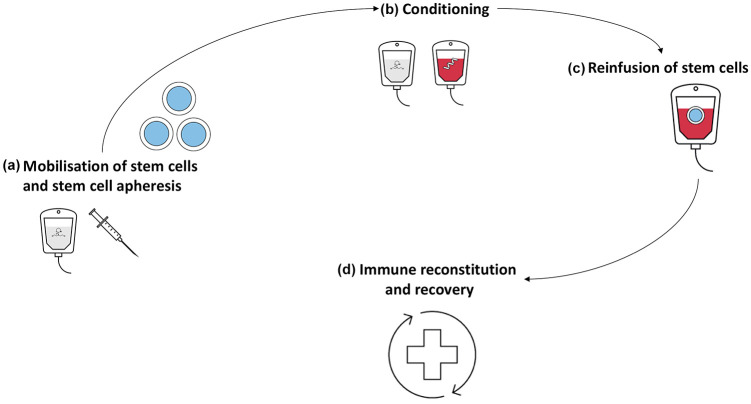Figure 1.
Autologous stem cell transplantation. (a) The first step in stem cell transplantation (SCT) is the mobilisation of stem cells from the bone marrow. This is most often done using chemotherapy, such as cyclophosphamide, to stimulate the production of stem cells in the bone marrow due to cytopenia. Granulocyte colony-stimulating factor is used to further facilitate the production and release of stem cells in the peripheral circulation. Subsequently, the stem cells are harvested using leukapheresis. (b) The next step is conditioning, which takes place approximately 4–6 weeks after mobilisation and leukapheresis. Myeloablative or highly immunosuppressive agents are administered, aiming to eliminate autoreactive B and T cells. Conditioning regimens in SCT for systemic sclerosis often include cyclophosphamide, anti-thymocyte globulin or total body irradiation. (c) Directly after completion of the conditioning scheme, stem cells are reinfused. Mostly graft manipulation is used (CD34+ selection), to improve efficacy of the treatment. (d) The last step involves supportive care during the aplastic phase, which normally takes 1 to 3 weeks until recovery. Full reconstitution of the immune system can take 6–9 months. Depending on the course of the treatment and condition of the patient pre-transplantation rehabilitation takes up several months.

